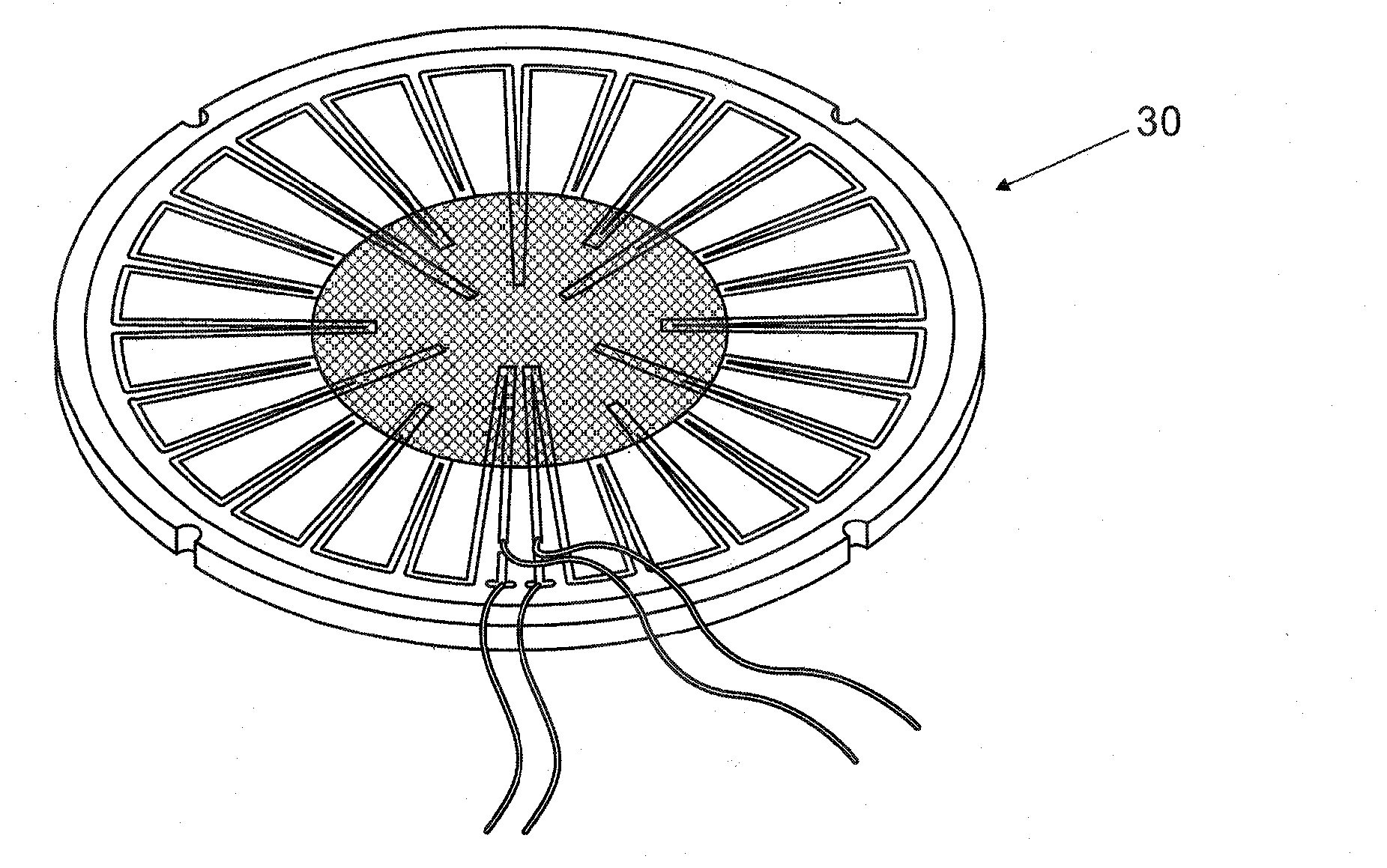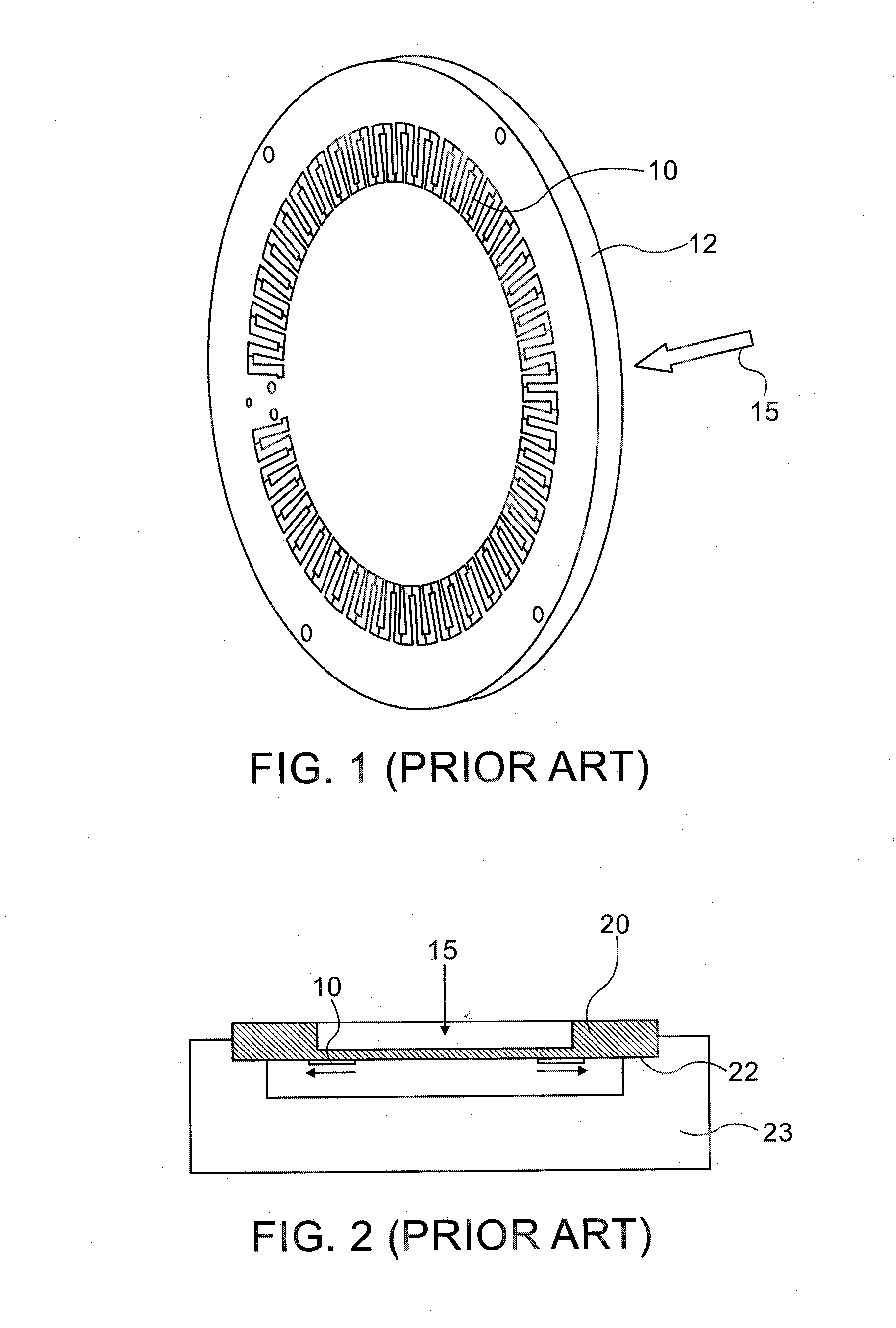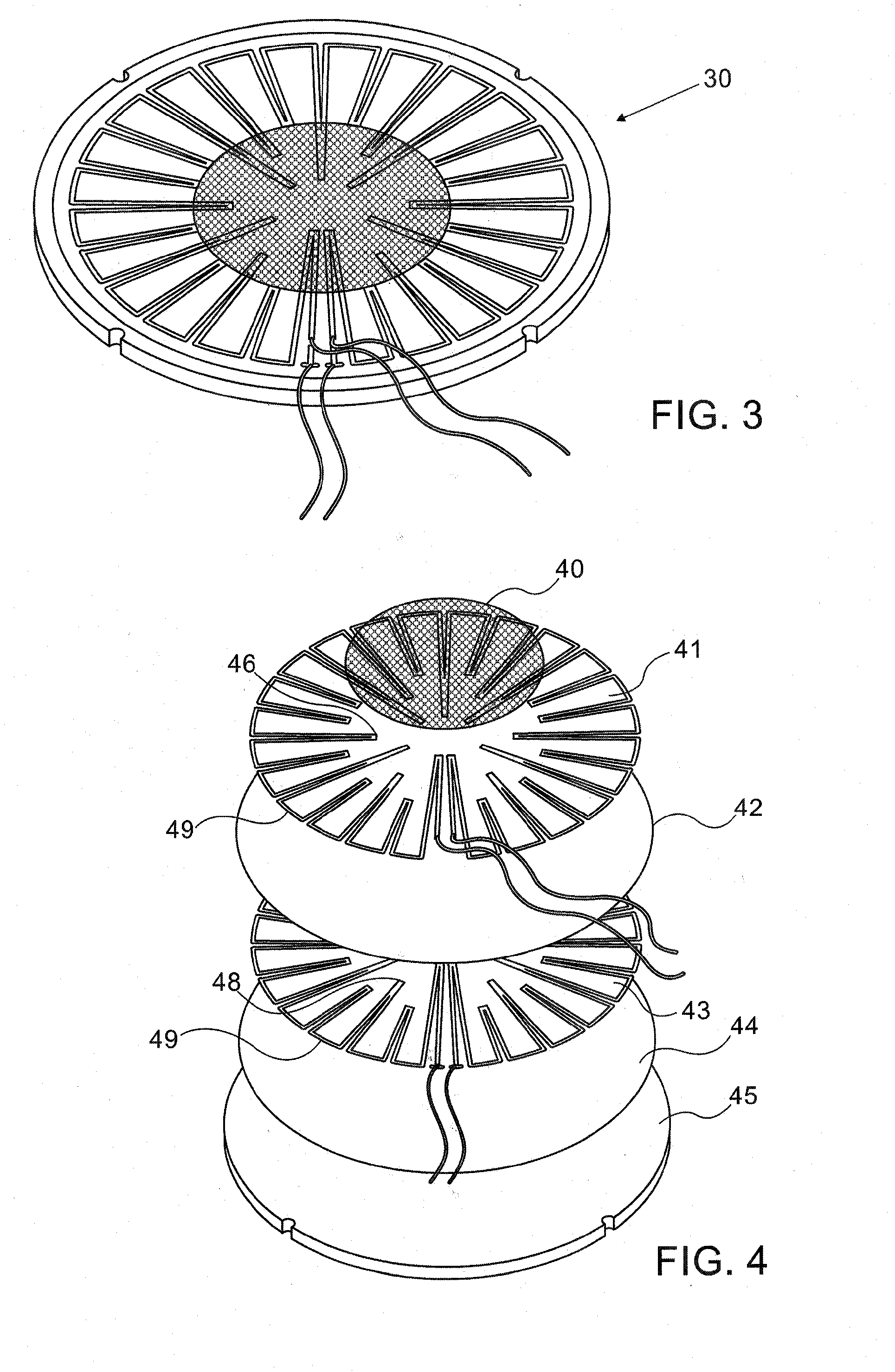Fast response thermopile power sensor
a technology of thermopile power and sensor, which is applied in the field of laser power measurement, can solve the problems of limited power handling capacity the typical response time of such a sensor is no faster than 1 sec, so as to shorten the distance the heat has to travel and achieve the effect of fast response, shortening the response time and shortening the distan
- Summary
- Abstract
- Description
- Claims
- Application Information
AI Technical Summary
Benefits of technology
Problems solved by technology
Method used
Image
Examples
Embodiment Construction
[0055]Reference is now made to FIGS. 3 and 4 which illustrate schematically an exemplary power measurement disc of a first type described in this disclosure. FIG. 3 shows an assembled disc 30 while FIG. 4 is an exploded view, showing the component parts. The device consists of a layered stacked structure, each of whose layers are in good thermal contact with their immediately neighboring layers, and comprising, in order from the power absorbing surface:
[0056](i) an absorbing layer 40 capable of withstanding the incident beam power density;
[0057](ii) a first radial thermopile 41;
[0058](iii) a first insulating layer 42;
[0059](iv) a second radial thermopile 43;
[0060](v) a second insulating layer 44; and
[0061](vi) a conductive heat sinking layer 45.
The radial thermopiles differ from the thermopiles used in the prior art discs as described above, in that the hot junctions 46 extend towards the center of the disc assembly, and are spread over the entire area in the region opposite the sur...
PUM
| Property | Measurement | Unit |
|---|---|---|
| response time | aaaaa | aaaaa |
| distance | aaaaa | aaaaa |
| response time | aaaaa | aaaaa |
Abstract
Description
Claims
Application Information
 Login to View More
Login to View More - R&D
- Intellectual Property
- Life Sciences
- Materials
- Tech Scout
- Unparalleled Data Quality
- Higher Quality Content
- 60% Fewer Hallucinations
Browse by: Latest US Patents, China's latest patents, Technical Efficacy Thesaurus, Application Domain, Technology Topic, Popular Technical Reports.
© 2025 PatSnap. All rights reserved.Legal|Privacy policy|Modern Slavery Act Transparency Statement|Sitemap|About US| Contact US: help@patsnap.com



